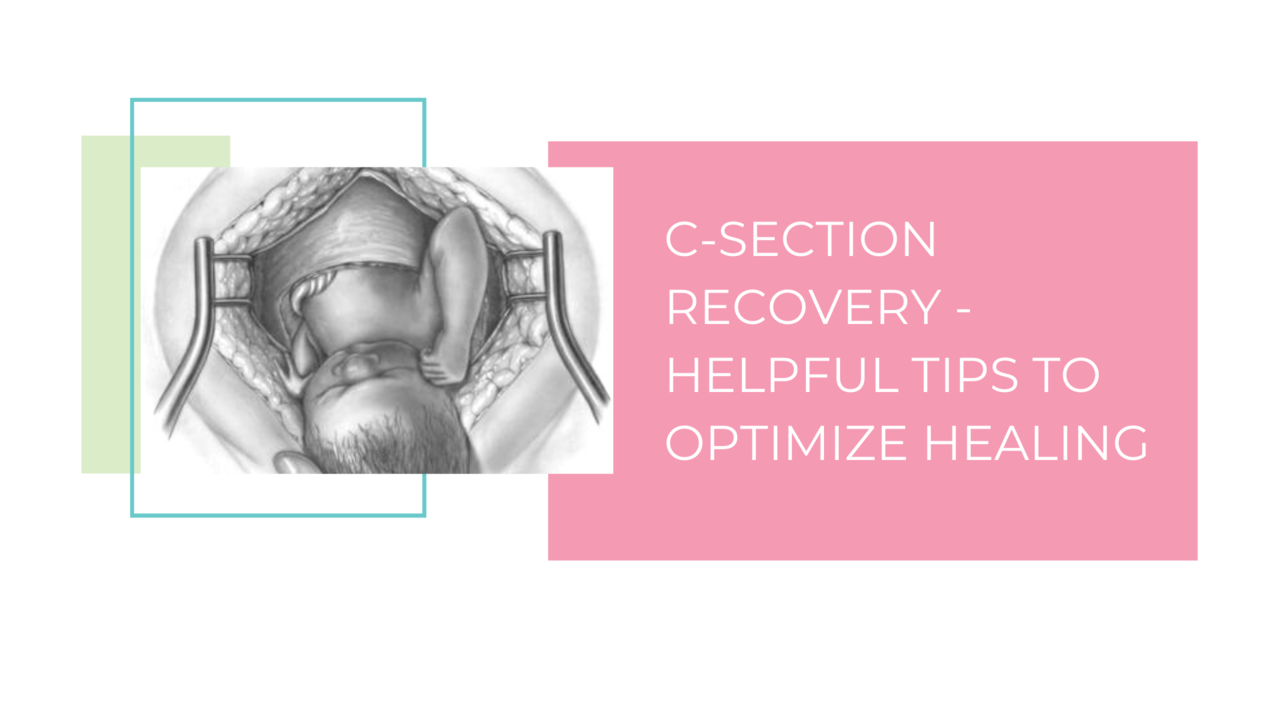
C-Section Recovery - Helpful Tips to Optimize Healing
Jan 02, 2020
Healing After a Cesarean
Cesarean births can be planned, which gives Mom time to prepare in advance for the procedure, and for the recovery. But in many cases C-sections happen unexpectedly, leaving many women feeling surprised and overwhelmed.
To make matters worse, little – if any – information is provided to new moms on how to recover properly.
C-section surgery involves cutting through the skin and underlying fat cells, the fascia (connective tissue) and the peritoneum (the lining of the abdominal cavity).
The abdominal muscles are spread apart and the bladder is then moved out of the way so an incision can be made in the uterus to remove the baby.
Once the baby is out, the incision in the uterus is sewn up, the bladder put back in place, the fascia is sutured and then, of course, the skin is stitched.
That is a whole lot of layers of incisions and then remaining scar tissue!
If you are recovering from a cesarean birth or know you will be having one, here are some tips on how to best recover and promote optimal healing.
Wrap Your Belly
Supportive abdominal garments can be very beneficial and should be put on as soon as possible after the surgery. This will provide support to the incision, help the connective tissues heal and encourage the abdominal muscles to re-align.
Rest!
Rest and hydration are essential. Ask your family for help getting in and out of bed, walking to the washroom, getting on and off the toilet and getting back into bed.
Move Carefully
Whenever you need to move, have someone assist you and follow these instructions.
- Take a deep breath in. On the exhale, engage your core by contracting and lifting your pelvic floor, and then roll to your side.
- Take another breath in, exhale to engage your pelvic floor, and then with assistance use your arms to push yourself up while your assistant helps pull you up and move your legs over the side of the bed.
- Place your hands over your incision to support the area while you move.
Spend as little time as possible on your feet for the first few days – this will reduce the effect of gravity on the sutures, on the pelvic floor and on the weak muscles and connective tissue. Don’t rush. Take the time to heal.
Don't Lift Anything
Do not lift anything heavier than your baby for the first few weeks. Heavy lifting and straining can damage weakened muscles and connective tissue as they are healing. Have family bring the baby to you for breastfeeding and cuddle time.
Gentle Exercises
Gentle point/flex/circle movements of the foot and ankle can be done throughout the day while in bed to encourage blood flow, help reduce swelling, remove toxins and minimize the risk of infection.
Start gentle pelvic floor exercises with restorative breathing within the first few days to encourage maximum oxygen delivery to your recovering core.
Inhale, allowing your ribs and belly to gently expand. Exhale gently through pursed lips to encourage the pelvic floor to engage. The exhalations will also help your body rid itself of any mucous that accumulated during the surgery.
Skin Brushing
Skin brushing encourages the movement of fluids in the body, which can help reduce swelling.
Using a soft bristle brush, gently stroke from your inner thigh upwards toward your heart – this can begin about two days post-partum and can be done several times daily.
Scar Tissue Mobilization
Scar tissue mobilization is important to prevent adhesions from building up in all of those layers of incision points. Adhesions can lead to decreased mobility and impaired core function.
See a pelvic floor physiotherapist for assistance and then practice daily at home.
Take It Easy Past Week Six
The six-week mark has generally been the ‘return to activity’ golden date, but really there is no set date. Everyone heals differently.
By six weeks postpartum you should be able to walk more freely, but vigorous activity, heavy lifting and high-impact movements are off-limits.
The focus remains on core restoration – because if the foundation is not restored, you will prevent proper healing of diastasis recti and increase the likelihood of suffering from incontinence and organ prolapse.
One last thing, mommy and boot camp (or other forms of vigorous exercise) do not belong in the same sentence. Say no to mommy boot camp.
Follow these tips, and get the support that you need, for the best recovery.
Recommended Programs:
The Buff Muff App
The Buff Muff App will help you finally get clarity on the elusive kegel and teach you how to activate your pelvic floor appropriately and then add it to movement. There is a ton of free content available to anyone who downloads the app including a 7-day pelvic floor fitness challenge to introduce you to the concept of a whole-body fitness approach to pelvic health. Once the free challenge ends you have the option to join the membership for ongoing support from me, your very own vagina coach.
Available on Android and iPhone. Download below:





